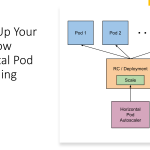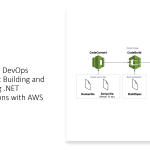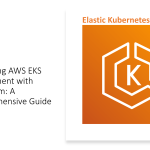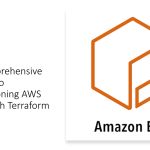In Azure, a landing zone is a pre-configured environment that provides a baseline for hosting workloads. It helps organizations establish a secure, scalable, and well-managed environment for their applications and services. A landing zone typically includes a set of Azure resources such as networks, storage accounts, virtual machines, and security controls.
Implementing a landing zone in Azure can be a complex task, but it can be simplified by using Infrastructure as Code (IaC) tools like Terraform. Terraform allows you to define and manage infrastructure as code, making it easier to create, modify, and maintain your landing zone.
Here are the steps to implement a landing zone in Azure using Terraform:
- Define your landing zone architecture: Decide on the resources you need to include in your landing zone, such as virtual networks, storage accounts, and virtual machines. Create a Terraform module for each resource, and define the parameters and variables for each module.
- Create a Terraform configuration file: Create a main.tf file and define the Terraform modules you want to use. Use the Azure provider to specify your subscription and authentication details.
- Initialize your Terraform environment: Run the ‘terraform init’ command to initialize your Terraform environment and download any necessary plugins.
- Plan your deployment: Run the ‘terraform plan’ command to see a preview of the changes that will be made to your Azure environment.
- Apply your Terraform configuration: Run the ‘terraform apply’ command to deploy your landing zone resources to Azure.
By implementing a landing zone in Azure using Terraform, you can ensure that your environment is consistent, repeatable, and secure. Terraform makes it easier to manage your infrastructure as code, so you can focus on developing and deploying your applications and services.
Once the landing zone architecture is defined, it can be implemented using various automation tools such as Azure Resource Manager (ARM) templates, Azure Blueprints, or Terraform. In this blog, we will focus on implementing a landing zone using Terraform.
Terraform is a widely used infrastructure-as-code tool that allows us to define and manage our infrastructure as code. It provides a declarative language that allows us to define our desired state, and then it takes care of creating and managing resources to meet that state.
To implement a landing zone using Terraform, we can follow these steps:
- Define the landing zone architecture: As discussed earlier, we need to define the architecture for our landing zone. This includes defining the network topology, security controls, governance policies, and management tools.
- Create a Terraform project: Once the landing zone architecture is defined, we can create a Terraform project to manage the infrastructure. This involves creating Terraform configuration files that define the resources to be provisioned.
- Define the Terraform modules: We can define Terraform modules to create reusable components of infrastructure. These modules can be used across multiple projects to ensure consistency and standardization.
- Configure Terraform backend: We need to configure the Terraform backend to store the state of our infrastructure. Terraform uses this state to understand the current state of our infrastructure and to make necessary changes to achieve the desired state.
- Initialize and apply Terraform configuration: We can initialize the Terraform configuration by running the
terraform initcommand. This command downloads the necessary provider plugins and sets up the backend. Once initialized, we can apply the Terraform configuration using theterraform applycommand. This command creates or updates the resources to match the desired state.
By implementing a landing zone using Terraform, we can ensure that our infrastructure is consistent, compliant, and repeatable. We can easily provision new environments, applications, or services using the same architecture and governance policies. This can reduce the time and effort required to manage infrastructure and improve the reliability and security of our applications.
Implementing Azure Landing Zone using Terraform and Reference Architecture
Below I provide general guidance on the steps involved in implementing an Azure Landing Zone using Terraform and the Azure Reference Architecture.
Here are the general steps:
- Create an Azure Active Directory (AD) tenant and register an application in the tenant.
- Create a Terraform module for the initial deployment of the Azure Landing Zone. This module should include the following:
- A virtual network with subnets and network security groups.
- A jumpbox virtual machine for accessing the Azure environment.
- A storage account for storing Terraform state files.
- An Azure Key Vault for storing secrets.
- A set of Resource Groups that organize resources for management, data, networking, and security.
- An Azure Policy that enforces resource compliance with standards.
- Implement the Reference Architecture for Azure Landing Zone using Terraform modules.
- Create a Terraform workspace for each environment (dev, test, prod) and deploy the Landing Zone.
- Set up and configure additional services in the environment using Terraform modules, such as Azure Kubernetes Service (AKS), Azure SQL Database, and Azure App Service.
Conclusion
Implementing an Azure Landing Zone using Terraform can be a powerful way to manage your cloud infrastructure. By automating the deployment of foundational resources and configuring policies and governance, you can ensure consistency, security, repeatable, and compliance across all of your Azure resources. Terraform’s infrastructure as code approach also makes it easy to maintain and update your Landing Zone as your needs evolve. This can help us reduce the time and effort required to manage our infrastructure and improve the reliability and security of our applications.
Whether you’re just getting started with Azure or looking to improve your existing cloud infrastructure, implementing an Azure Landing Zone with Terraform is definitely worth considering. With the right planning, tooling, and expertise, you can create a secure, scalable, and resilient cloud environment that meets your business needs.
References
- Azure landing zone design areas and conceptual architecturecloud-adoption-framework/ready/landing-zone/design-areas
- Azure Cloud Adoption Framework for Azure landing zones
- Terraform AzureRM provider documentation
- Azure Terraform examples on GitHub
- Terraform documentation
Example Code
- Implementing Azure Landing Zone using Terraform :
Here’s an example Terraform code snippet that creates an Azure Landing Zone with a virtual network, subnets, and a network security group:
- Define the subscription and resource group using Terraform:
#hcl coderesource "azurerm_resource_group" "landing_zone_rg" { name = "landing-zone-rg" location = var.location } resource "azurerm_virtual_network" "landing_zone_vnet" { name = "landing-zone-vnet" address_space = ["10.0.0.0/16"] location = var.location resource_group_name = azurerm_resource_group.landing_zone_rg.name subnet { name = "web-subnet" address_prefix = "10.0.1.0/24" } subnet { name = "db-subnet" address_prefix = "10.0.2.0/24" } } resource "azurerm_network_security_group" "landing_zone_nsg" { name = "landing-zone-nsg" location = var.location resource_group_name = azurerm_resource_group.landing_zone_rg.name security_rule { name = "http" priority = 100 direction = "Inbound" access = "Allow" protocol = "Tcp" source_port_range = "*" destination_port_range = "80" source_address_prefix = "*" destination_address_prefix = "*" } security_rule { name = "ssh" priority = 200 direction = "Inbound" access = "Allow" protocol = "Tcp" source_port_range = "*" destination_port_range = "22" source_address_prefix = "*" destination_address_prefix = "*" } }resource "azurerm_network_security_group" "nsg-web" { name = "nsg-web-dev" location = azurerm_resource_group.resource_group.location resource_group_name = azurerm_resource_group.resource_group.name } resource "azurerm_network_security_group" "nsg-db" { name = "nsg-db-dev" location = azurerm_resource_group.resource_group.location resource_group_name = azurerm_resource_group.resource_group.name } resource "azurerm_subnet_network_security_group_association" "web-nsg" { subnet_id = azurerm_virtual_network.virtual_network.subnet_web.id network_security_group_id = azurerm_network_security_group.nsg-web.id } resource "azurerm_subnet_network_security_group_association" "db-nsg" { subnet_id = azurerm_virtual_network.virtual_network.subnet_db.id network_security_group_id = azurerm_network_security_group.nsg-db.id }
This Terraform code creates a resource group, a virtual network, a subnet, and two additional subnet for web-frontend, db-backend , associated network security groups, and associates the subnet with the network security group. The network security group allows inbound traffic on port 22 (SSH) and port 80 (HTTP). This is just an example, and the security rules can be customized as per the organization’s security policies.
- Create an Azure Kubernetes Service (AKS) cluster:
#hcl coderesource "azurerm_kubernetes_cluster" "aks" { name = "aks-dev" location = azurerm_resource_group.resource_group.location resource_group_name = azurerm_resource_group.resource_group.name dns_prefix = "aks-dev" default_node_pool { name = "default" node_count = 1 vm_size = "Standard_D2s_v3" os_disk_size_gb = 30 } }
2. Implementing Azure Landing Zone using Terraform and Cloud Adoption Framework:
Cloud Adoption Framework for Azure provides a set of recommended practices for building and managing cloud-based applications. You can use Terraform to implement these best practices in your Azure environment.
Here’s an example of implementing a landing zone for a development environment using Terraform and the Cloud Adoption Framework modules:
security groups using the Azure Cloud Adoption Framework (CAF) Terraform modules:
#hcl codeprovider "azurerm" { features {} } module "caf" { source = "aztfmod/caf/azurerm" version = "5.3.0" naming_prefix = "myproject" naming_suffix = "dev" resource_group_location = "eastus" resource_group_name = "rg-networking-dev" diagnostics_log_analytics = false diagnostics_event_hub = false diagnostics_storage_account = false custom_tags = { Environment = "Dev" } # Define the virtual network virtual_networks = { my_vnet = { address_space = ["10.0.0.0/16"] dns_servers = ["8.8.8.8", "8.8.4.4"] subnets = { frontend = { cidr = "10.0.1.0/24" enforce_public = true } backend = { cidr = "10.0.2.0/24" } } nsgs = { frontend = { rules = [ { name = "HTTP" priority = 100 direction = "Inbound" access = "Allow" protocol = "Tcp" source_port_range = "*" destination_port_range = "80" source_address_prefix = "*" destination_address_prefix = "*" } ] } } } } }
In this example, the aztfmod/caf/azurerm module is used to create a virtual network with two subnets (frontend and backend) and a network security group (NSG) applied to the frontend subnet. The NSG has an inbound rule allowing HTTP traffic on port 80.
Note that the naming_prefix and naming_suffix variables are used to generate names for the resources created by the module. The custom_tags variable is used to apply custom tags to the resources.
This is just one example of how the Azure Cloud Adoption Framework Terraform modules can be used to create a landing zone. There are many other modules available for creating other types of resources, such as virtual machines, storage accounts, and more.
Due to the complexity and length of the example code for implementing Azure Landing Zone using Terraform and Reference Architecture, it is not possible to provide it within a blog article.
However, here are the high-level steps and an overview of the code structure:
- Define the variables and providers for Azure and Terraform.
- Create the Resource Group for the Landing Zone and networking resources.
- Create the Virtual Network and Subnets with the appropriate address spaces.
- Create the Network Security Groups and associate them with the appropriate Subnets.
- Create the Bastion Host for remote access to the Virtual Machines.
- Create the Azure Firewall to protect the Landing Zone resources.
- Create the Storage Account for Terraform state files.
- Create the Key Vault for storing secrets and keys.
- Create the Log Analytics Workspace for monitoring and logging.
- Create the Azure Policy Definitions and Assignments for enforcing governance.
The code structure follows the Cloud Adoption Framework (CAF) for Azure landing zones and is organized into the following directories:
variables: Contains the variables used by the Terraform code.providers: Contains the provider configuration for Azure and Terraform.resource-groups: Contains the code for creating the Resource Group and networking resources.virtual-networks: Contains the code for creating the Virtual Network and Subnets.network-security-groups: Contains the code for creating the Network Security Groups and associating them with the Subnets.bastion: Contains the code for creating the Bastion Host.firewall: Contains the code for creating the Azure Firewall.storage-account: Contains the code for creating the Storage Account for Terraform state files.key-vault: Contains the code for creating the Key Vault for secrets and keys.log-analytics: Contains the code for creating the Log Analytics Workspace.policy: Contains the code for creating the Azure Policy Definitions and Assignments.
Each directory contains a main.tf file with the Terraform code, as well as any necessary supporting files such as variables and modules.
Overall, implementing an Azure Landing Zone using Terraform and Reference Architecture requires a significant amount of planning and configuration. However, the end result is a well-architected, secure, and scalable environment that can serve as a foundation for your cloud-based workloads.
It’s important to note that the specific code required for this process will depend on your organization’s specific needs and requirements. Additionally, implementing an Azure Landing Zone can be a complex process and may require assistance from experienced Azure and Terraform professionals.




